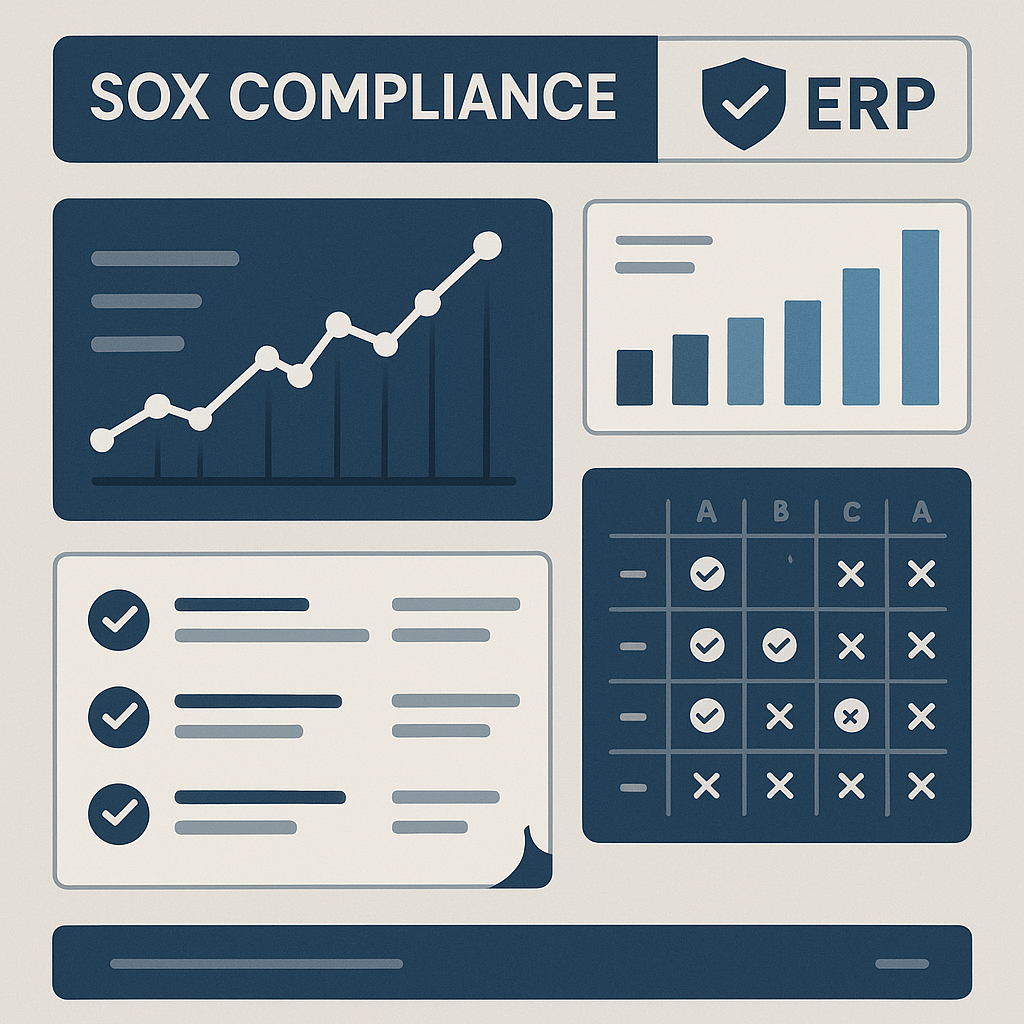
Table of Contents
Sarbanes-Oxley (SOX) compliance has been a reality for public companies for over two decades. Yet, a perspective forged through years of navigating enterprise integrations reveals a persistent struggle: many organizations still treat SOX controls as a burdensome layer of checklists and manual reviews, rather than a deeply integrated component of their financial system architecture. With the shift to sophisticated cloud ERPs like Workday, NetSuite, or Acumatica, the opportunity to architect compliance into the system, rather than bolting it on, has never been greater. The question is, are we seizing it?
The core challenge isn’t a lack of features. Modern ERPs are packed with powerful security and workflow tools. The difficulty often lies in translating abstract control objectives into concrete system configurations. It’s the gap between what the auditors want to see and what the system can actually do.
Beyond Manual Sign-Offs: Automating Control Evidence
Think about the traditional SOX audit. It often involves auditors requesting screenshots, printouts, and manually signed forms as evidence that a control was performed. This isn’t only inefficient but also provides only point-in-time assurance. Insights distilled from numerous system deployments indicate that the most effective SOX compliance programs leverage the ERP to automate the generation of this evidence.
This involves several key architectural patterns. Workflow-Embedded Approvals represent a fundamental shift from relying on email approvals that are difficult to track. Modern controls are built directly into the ERP’s workflow engine. When a journal entry above a certain materiality threshold is created, the system automatically routes it for approval. The approval itself (who did it, when, and any accompanying comments) becomes captured as an immutable part of the transaction record. This creates a self-documenting audit trail.
Configuration-as-Control addresses the reality that many controls are, at their heart, about system configuration. A three-way match tolerance in the accounts payable module is a critical control. Mature governance processes treat changes to these configurations with the same rigor as a financial transaction, requiring formal change requests, testing, and approvals. The system’s own change logs then serve as the primary evidence of control integrity.
Automated Reconciliation and Exception Reporting eliminates the traditional manual reconciliations performed in Excel. Modern ERPs can perform these reconciliations automatically. The “control” then shifts from the manual review to the monitoring of the automation’s output. The audit evidence becomes the system-generated report of reconciliation exceptions, along with the documented resolution of those exceptions.
This shift from manual evidence to system-generated proof is fundamental. It doesn’t only streamline the audit process but also provides a much higher level of assurance through continuous, automated validation.
The Segregation of Duties (SoD) Conundrum
Segregation of Duties (SoD) remains one of the most complex areas of SOX compliance, particularly in systems with highly flexible role-based security. A common pitfall longitudinal data reveals is that organizations create roles based on job titles or convenience, inadvertently granting users a toxic combination of permissions (the ability to create a vendor and also approve payments to that vendor, for instance).
Architecting for SoD in a modern ERP involves a more deliberate approach. It requires a systematic risk analysis, where you identify potentially conflicting permissions based on your specific business processes. This analysis informs the design of highly granular security roles. The goal is to build roles based on the principle of least privilege, providing users with only the access they absolutely need to perform their duties. This approach proves far superior to starting with broad, “superuser” roles and then trying to restrict them. You start with a locked-down system and grant access deliberately.
Furthermore, leading platforms often include tools to analyze and report on potential SoD conflicts within the role structures themselves. Proactively running these reports allows organizations to identify and mitigate risks before they can be exploited, rather than discovering them during an audit.
Building Sustainable Compliance Frameworks
Preparing for the Future: Adaptable Controls
The regulatory landscape is never static. A control framework that’s perfectly compliant today might be inadequate tomorrow. This is where the flexibility of cloud ERPs can be a significant advantage. The ability to rapidly reconfigure workflows, update approval matrices, and adjust reporting parameters allows organizations to adapt to new regulatory requirements without the need for lengthy custom development cycles.
Field-tested perspectives highlight that the most resilient compliance programs are those built on adaptable system architectures. They view controls not as a fixed set of rules, but as a dynamic framework that can evolve with the business and the regulatory environment.
Ultimately, mastering SOX compliance in a modern ERP is about shifting the mindset. It’s about moving from a world of manual checks and reactive documentation to one of automated validation and proactive governance. It’s a journey that requires careful planning and a deep understanding of both accounting principles and system capabilities, but the payoff in efficiency, accuracy, and peace of mind is substantial.
For further discussion on these topics, feel free to connect with me on LinkedIn.